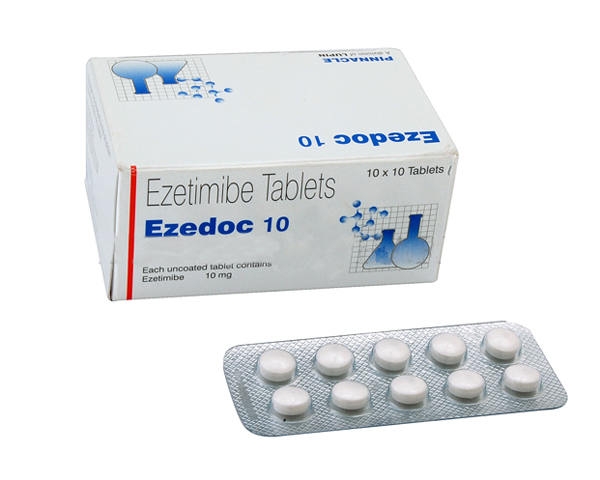

However, rhabdomyolysis has been reported with ZETIA monotherapy and with the addition of ZETIA to agents known to be associated with increased risk of rhabdomyolysis, such as fibrates. Most patients who developed rhabdomyolysis were taking a statin prior to initiating ZETIA. In post-marketing experience with ZETIA, cases of myopathy and rhabdomyolysis have been reported. Risk for skeletal muscle toxicity increases with higher doses of statin, advanced age (>65), hypothyroidism, renal impairment, and depending on the statin used, concomitant use of other drugs. 0.1% for placebo, and 0.1% for ZETIA coadministered with a statin vs. In clinical trials, the incidence of creatine phosphokinase (CPK) >10 × ULN was 0.2% for ZETIA vs. However, myopathy and rhabdomyolysis are known adverse reactions to statins and other lipid-lowering drugs. In clinical trials, there was no excess of myopathy or rhabdomyolysis associated with ZETIA compared with the relevant control arm (placebo or statin alone). Hypersensitivity reactions including anaphylaxis, angioedema, rash and urticaria have been reported with ZETIA. Patients with a known hypersensitivity to any component of this product.

Because statins may pass into breast milk, and because statins have the potential to cause serious adverse reactions in nursing infants, women who require ZETIA treatment in combination with a statin should be advised not to nurse their infants. If the patient becomes pregnant while taking this drug, the patient should be apprised of the potential hazard to the fetus and the lack of known clinical benefit with continued use during pregnancy. Additionally, there is no apparent benefit to therapy during pregnancy, and safety in pregnant women has not been established. Because statins decrease cholesterol synthesis and possibly the synthesis of other biologically active substances derived from cholesterol, ZETIA in combination with a statin may cause fetal harm when administered to pregnant women.

Women who are pregnant or may become pregnant.The combination of ZETIA with a statin is contraindicated in patients with active liver disease or unexplained persistent elevations in hepatic transaminase levels.ZETIA is contraindicated in the following conditions:
Zetia tab idmg full#
FULL PRESCRIBING INFORMATION: CONTENTS * 1 INDICATIONS AND USAGE 1.1 Primary Hyperlipidemia 1.2 Homozygous Familial Hypercholesterolemia (HoFH) 1.3 Homozygous Sitosterolemia 1.4 Limitations of Use 2ĝOSAGE AND ADMINISTRATION 2.1 General Dosing Information 2.2Ĝoncomitant Lipid-Lowering Therapy 2.3Ĝoadministration with Bile Acid Sequestrants 2.4 Patients with Hepatic Impairment 2.5 Patients with Renal Impairment 2.6 Geriatric Patients 3ĝOSAGE FORMS AND STRENGTHS 4ĜONTRAINDICATIONS 5 WARNINGS AND PRECAUTIONS 5.1 Use with Statins or Fenofibrate 5.2 Liver Enzymes 5.3 Myopathy/Rhabdomyolysis 5.4 Hepatic Impairment 6ĚDVERSE REACTIONS 6.1Ĝlinical Trials Experience 6.2 Post-Marketing Experience 7ĝRUG INTERACTIONS 7.1Ĝyclosporine 7.2ğibrates 7.3ğenofibrate 7.4Ĝholestyramine 7.5Ĝoumarin Anticoagulants 8 USE IN SPECIFIC POPULATIONS 8.1 Pregnancy 8.3 Nursing Mothers 8.4 Pediatric Use 8.5 Geriatric Use 8.6 Renal Impairment 8.7 Hepatic Impairment 10 OVERDOSAGE 11ĝESCRIPTION 12ĜLINICAL PHARMACOLOGY 12.1 Mechanism of Action 12.2 Pharmacodynamics 12.3 Pharmacokinetics 13 NONCLINICAL TOXICOLOGY 13.1Ĝarcinogenesis, Mutagenesis, Impairment of Fertility 13.2Ěnimal Toxicology and/or Pharmacology 14ĜLINICAL STUDIES 14.1 Primary Hyperlipidemia 14.2 Homozygous Familial Hypercholesterolemia (HoFH) 14.3 Homozygous Sitosterolemia (Phytosterolemia) 16 HOW SUPPLIED/STORAGE AND HANDLING 17 PATIENT COUNSELING INFORMATION 17.1 Muscle Pain 17.2 Liver Enzymes 17.3 Pregnancy 17.4ěreastfeeding * Sections or subsections omitted from the full prescribing information are not listed.


 0 kommentar(er)
0 kommentar(er)
